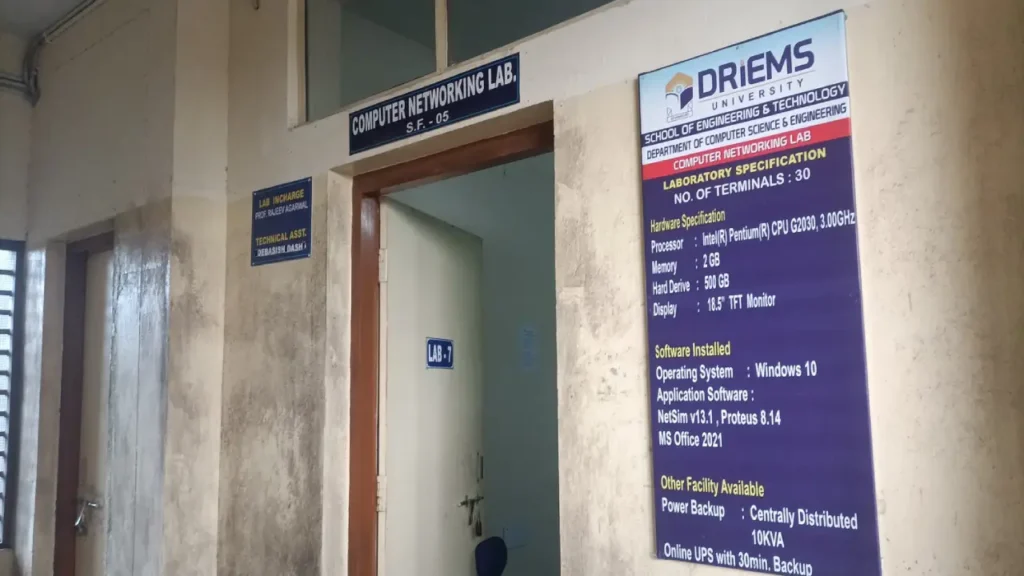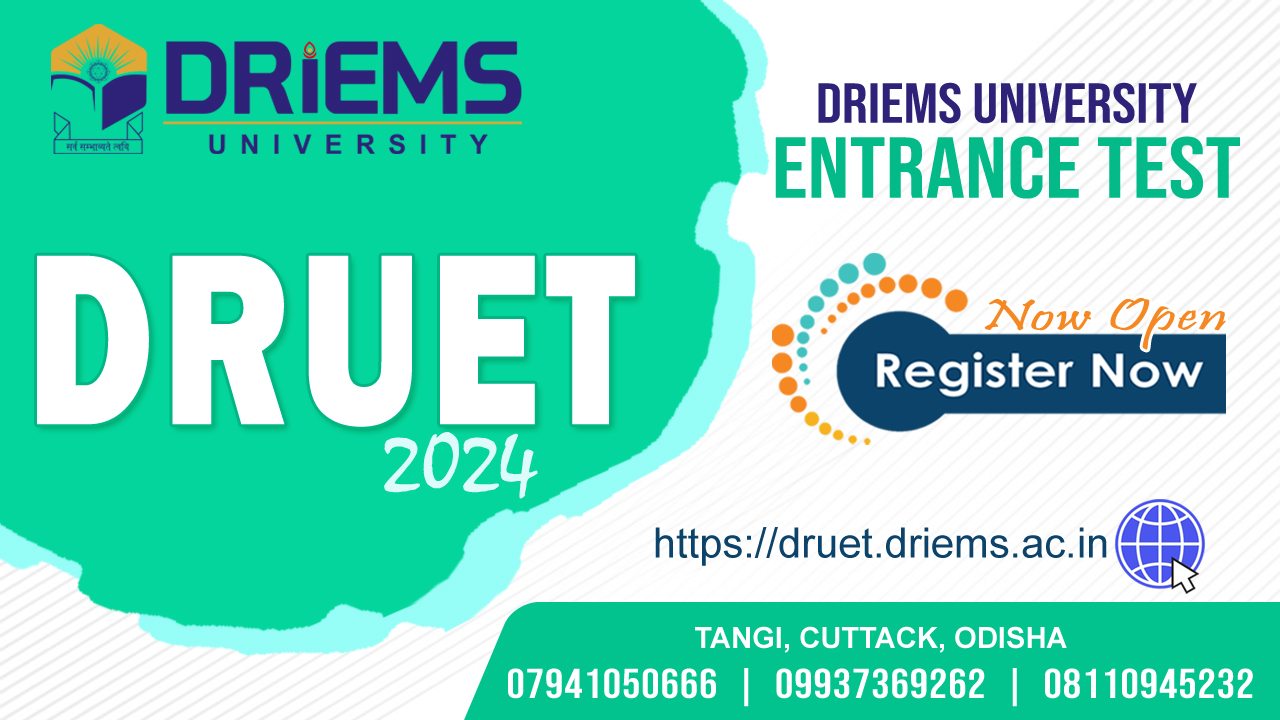Computer Science and Engineering Labs
Innovating the Future, One Line of Code at a Time
Welcome to the Department of Computer Science and Engineering at SOET, DRIEMS University. It is an honor to greet you as you explore the many opportunities our department has to offer. Whether you are a prospective student, a current student, or a valued partner, I extend my warmest welcome to our vibrant academic community. In today’s digital era, the field of Computer Science and Engineering is at the forefront of innovation, shaping the future of technology and society. Our department is committed to providing a cutting-edge education that not only covers foundational theories but also the latest advancements in areas such as artificial intelligence, data science, cyber security, software engineering, and more.
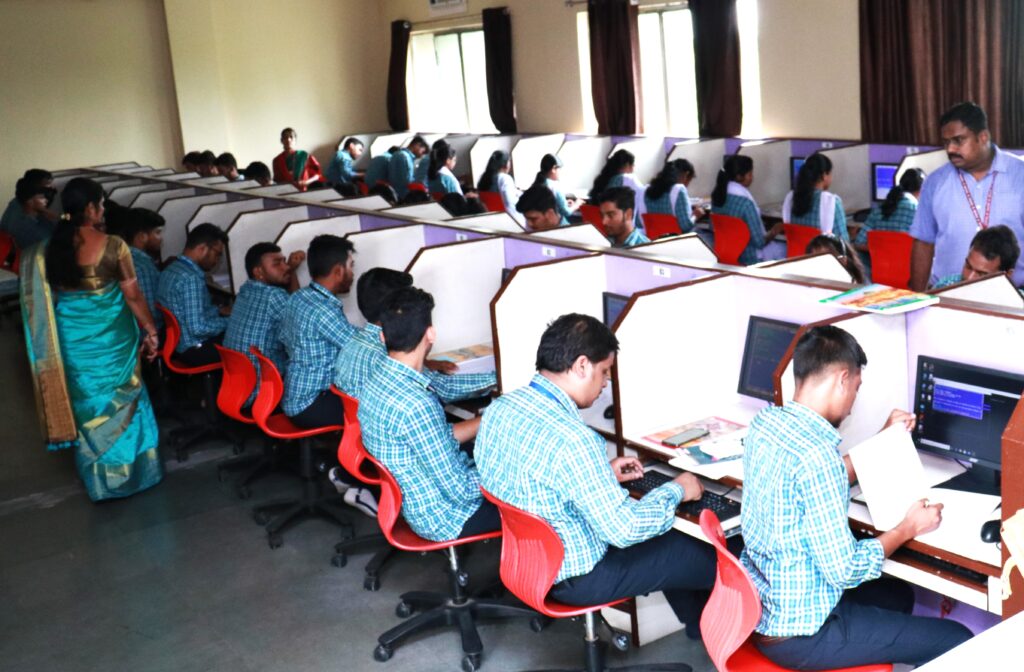
Staff
Sonali Priyadarshini Mohapatra
Compiler Design Lab,</br> Object Oriented Programming Lab
Biranchi Kumar Nayak
Object Oriented Programming Lab, Software Technology Lab
Email: biranchinayak@driems.ac.in
Computer Centre Lab
Available Systems: The Computer Centre Lab typically houses 60 desktop computers, all equipped with the latest hardware to support a wide range of applications. These systems generally feature high-speed processors, ample RAM (16 GB or more), and large storage capacities.
Software: This lab is equipped with a variety of essential software, including operating systems like Windows and ubuntu, office suites, development environments (e.g., Visual Studio, Eclipse, Jupyter notebook, MySql workbench), and commonly used programming languages such as Python, C++, Java and Mysql. The lab may also provide access to cloud services for broader computational needs.
Other Resources: High-speed internet connectivity, projectors for presentations are available. The lab may also have provisions for remote access to systems.
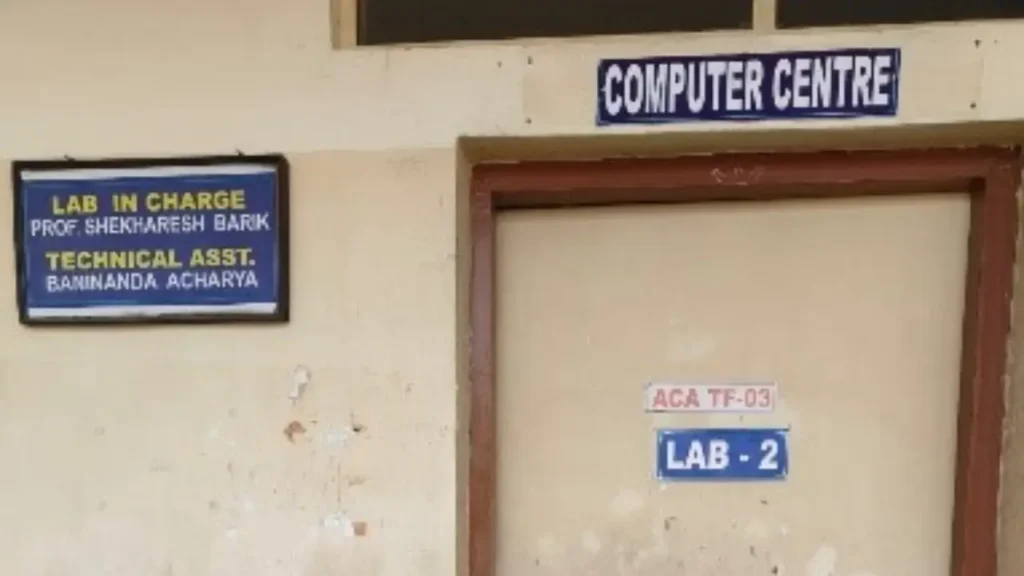
Advanced Programming Lab
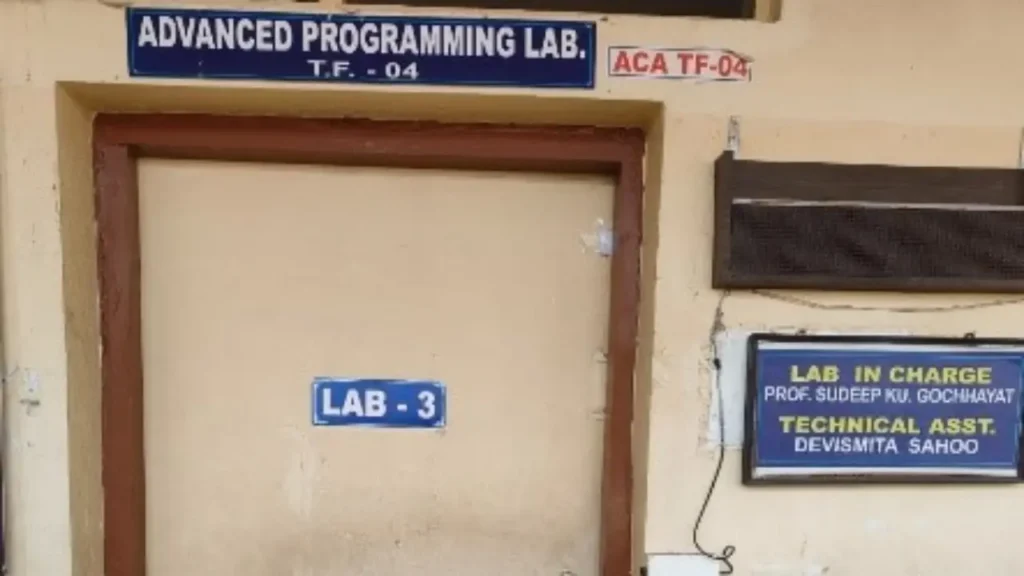
Available Systems: The Advanced Programming Lab usually consists of 60 high-performance computers with multi-core processors, SSDs, and 16 GB or more of RAM to handle complex programming tasks and simulations.
Software: This lab is equipped with advanced Integrated Development Environments (IDEs) like IntelliJ IDEA, Jupyter notebook, Matlab, and Textpad, as well as version control systems such as Git. It also supports various programming languages, including but not limited to Python, C++, Java. Tools for code analysis, debugging, and testing is also available.
Other Resources: Dual-monitor setups, high-speed internet, and collaborative tools like GitHub or GitLab are provided to facilitate team-based projects. The lab may also include access to cloud-based development environments.
OOPs Lab (Object-Oriented Programming Systems)
Available Systems: Typically, the OOPs Lab has around 60 computers, all with moderate to high-end specifications, suitable for developing and testing object-oriented programming projects.
Software: The lab features IDEs like Dev C++, Turbo C++, Jupyter Notebook, Textpad, and Visual Studio, all configured with Java, C++, and Python. The lab may also include software for unit testing and version control.
Other Resources: Whiteboards for designing class diagrams, projectors for code walkthroughs, and resources for pair programming are standard. High-speed internet and access to relevant documentation and textbooks may also be available.

Database Engineering Lab
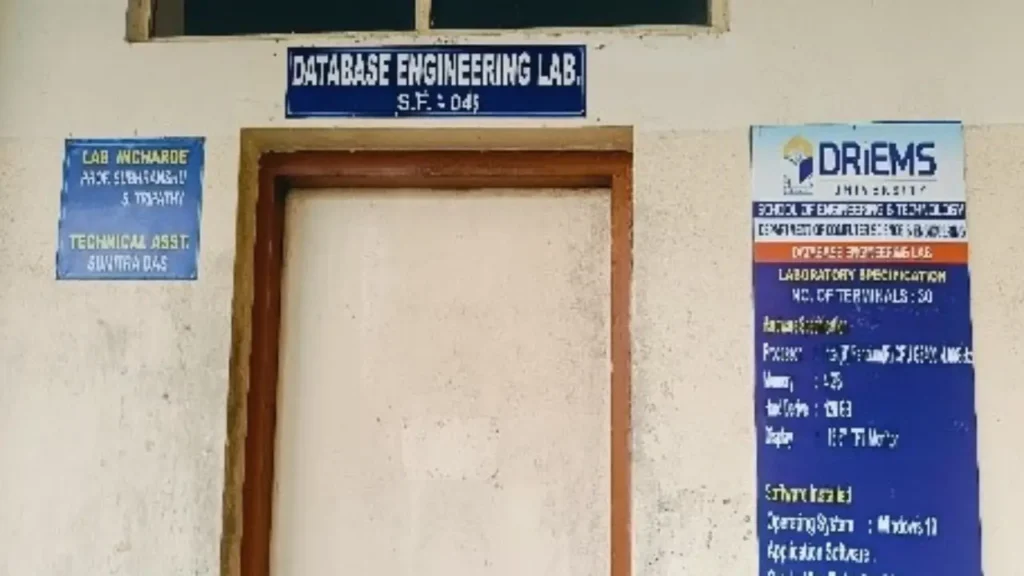
Available Systems: The Database Engineering Lab generally includes 30-60 computers, each with robust hardware configurations to manage large datasets and run complex queries efficiently.
Software: This lab is equipped with database management systems (DBMS) such as MySQL, PostgreSQL, Oracle, and Microsoft SQL Server. Tools for database design, such as MySQL Workbench also available. Scripting languages like SQL, PL/SQL, and tools for data visualization and analysis are provided.
Other Resources: The lab may have access to cloud-based database services, sandbox environments for testing, and tools for backup and recovery. High-speed internet, projectors, and whiteboards for collaborative design sessions are also available.
L.T. Workshop - MATLAB
Available Systems: The MATLAB Workshop typically features 20-60 high-end computers, equipped with powerful CPUs and large amounts of RAM to handle intensive computational tasks and simulations.
Software: MATLAB is the primary software used in this lab, along with its various toolboxes like Simulink, Matlab Coder, Control System Toolbox, and Image Processing Toolbox. The lab may also include alternatives like GNU Octave or SciPy for numerical computing.
Other Resources: High-speed internet, dual-monitor setups, and projectors for demonstration purposes are standard. The lab might also have access to MATLAB Online for remote learning and collaboration.
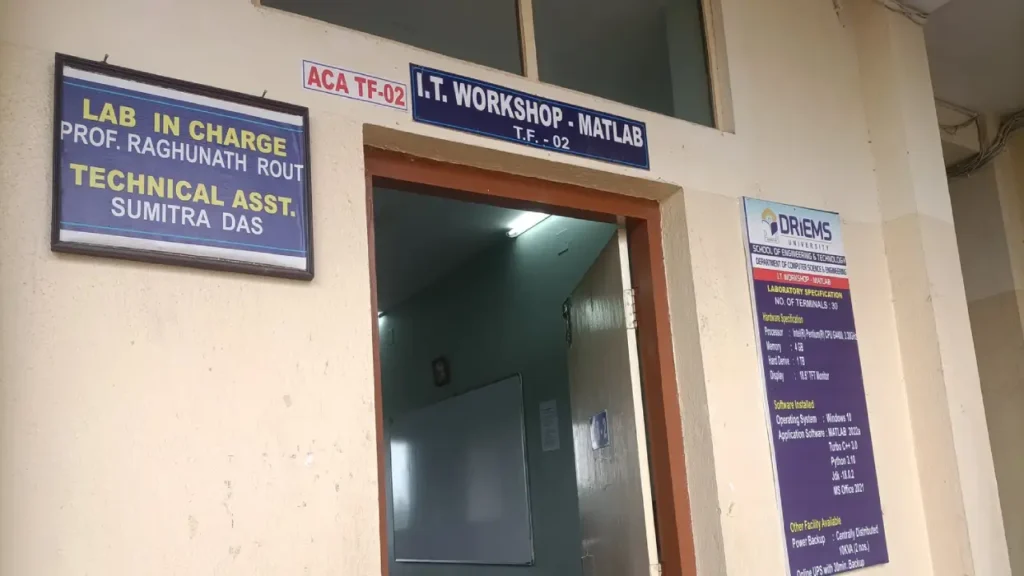
Research Project Lab
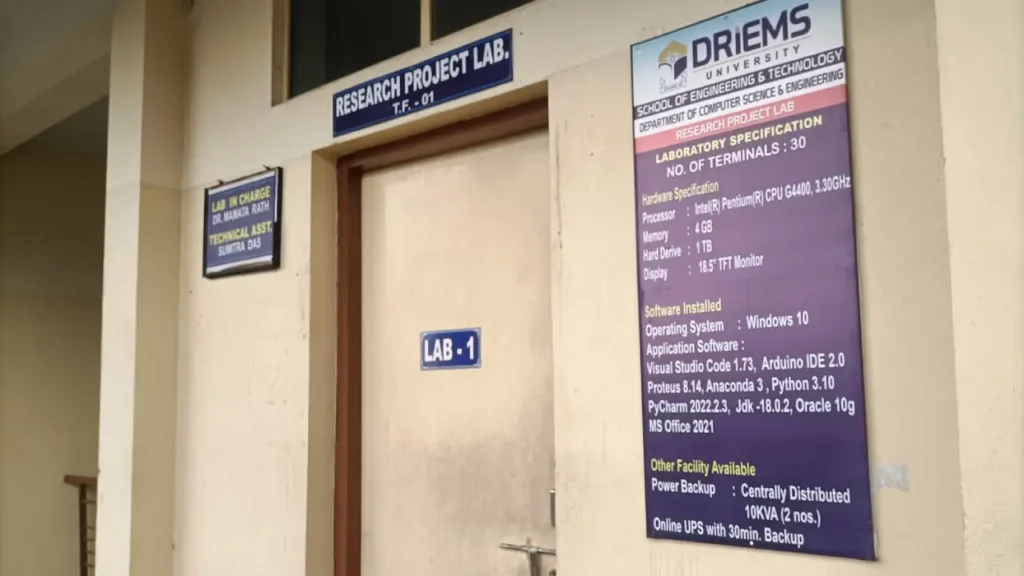
Available Systems: The Research Project Lab usually offers a more specialized environment with 10-20 high-end workstations or servers. These systems are equipped with the latest processors, large amounts of RAM (32GB or more), and high-capacity storage, often including SSDs and cloud access.
Software: Depending on the research focus, the lab may include software for data analysis (R, Python, MATLAB), machine learning (TensorFlow, PyTorch), and simulation tools. Research-specific software like LaTeX for documentation and tools for version control (Git) are also common.
Other Resources: The lab provides access to specialized hardware such as GPUs for deep learning, high-speed internet, collaboration tools, and access to academic journals and research databases. It may also include remote access to computing resources and cloud platforms like AWS or Google Cloud.
Computer Networking Lab
Available Systems: The Computer Networking Lab is typically equipped with 60 computers configured to simulate various networking environments. These systems include networking hardware like routers, switches, and firewalls.
Software: This lab uses network simulation tools like Cisco Packet Tracer, GNS3, and Wireshark for network analysis. It also includes software for configuring and managing virtual networks, such as VMware or VirtualBox, and tools for monitoring and managing network traffic.
Other Resources: The lab may have physical networking equipment for hands-on experience, including routers, switches, and cables. High-speed internet, projectors for network topology demonstrations, and whiteboards for design discussions are also standard. Additionally, it may include virtual lab environments for remote access and practice.
